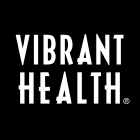
Health
Milk Thistle: Holistic liver support.
March
02,
2020
Milk thistle is a spiky plant native to the Mediterranean region. The active complex of milk thistle is a fat-soluble extract from the seeds of the plant and is rich in phytonutrients. Milk thistle contains phytochemicals such as isomer flavonolignans, silybinin, silymarin, isosilibinin, betaine, silychristin, and silydianin. It also offers a rich source of flavonoids. It's 3 of those flavonolignans - silybin, silydianin, and silychristin - which collectively are known as 'silymarin.' Of these three flavonolignans, you'll note that silybin is the single component with the highest degree of biological activity and makes up 50% to 70% of silymarin. The terms ‚milk thistle‚ and ‚silymarin‚ are often used interchangeably, even though they aren't the same thing. Silymarin is primarily what we're interested in. It is by far the most well‚êresearched plant extract used to support liver health.
While silymarin is found in relatively large quantities in milk thistle, there are other plant sources of silymarin including turmeric, cilantro, black cohosh, dark-skinned grapes, wild artichokes, beet greens, peanuts, brewer's yeast, and many berries. The entire milk thistle plant contains silymarin, but you'll find that it's concentrated in the fruit and seeds, which consist of about 70% of this vital phytonutrient.
The name ‚milk thistle‚ (Silybum marianum) itself holds a rather interesting history; it comes from a feature of the leaves, which are prominently banded with splashes of white. Traditional stories say that these milky bands were caused by a drop of the Virgin Mary's milk falling onto its leaves. Hence, the plant‚s specific name Marianum, which is the origin of another common name for the plant, 'St. Mary's Thistle' or Holy Thistle. This prickly plant has distinctive purple flowers, and if the leaves are ripped or crushed, a milky white liquid comes out.
Often considered a weed, history shows us that milk thistle has been used for over 2,000 years as a natural remedy for liver and gallbladder disorders. It's referred to in the Bible and Theophrastus‚ book VI. Iv.3 mentioned Œ¨Œ∫ŒøœÅŒŒ (milk thistle). Both Dioscorides and Pliny the Elder wrote about the health benefits of milk thistle. Pliny goes so far as to refer to the improvement of bile flow using milk thistle.
Current documentation confirms that milk thistle acts as a cholagogue agent and increases the actual flow of bile from your gallbladder. In addition, it increases your bile production, which helps you breakdown your foods while stimulating enzyme formation, which further assists your digestion. It's been shown to decrease inflammation through the demulcent action of this herb that helps to soothe the mucous membranes in your body affected due to the inflammatory changes.
That the flavonoid silymarin and its structural component, silybin, are substances with documented liver-protective properties is no question, but, somehow, their mechanisms of action are still somewhat poorly understood. The data in the literature indicate that silymarin and silybin act in 4 different ways:
1. As antioxidants, scavengers and regulators of your intracellular content of glutathione
2. As cell membrane stabilizers and permeability regulators. This prevents hepatotoxic agents from entering hepatocytes (the main structures of your liver)
3. As promoters of ribosomal RNA synthesis (helping to stimulate liver regeneration)
4. As inhibitors of the transformation of hepatocytes into myofibroblasts (preventing toxins from binding to the hepatocyte cell membrane receptors)
The most common use of silymarin, however, has yet to be discussed: helping to support liver health due to damage from various conditions. Silymarin has been shown to help reduce liver injury caused by acetaminophen, carbon tetrachloride, radiation, iron overload, phenylhydrazine, alcohol, cold ischemia and Amanita phalloides.
Research has also strongly supported silymarin acting as an antioxidant by reducing free radical production. Do you know what a free radical is? You may recall from 6th grade science that an atom contains a nucleus with a certain number of protons. For that atom to be stable, it needs a matching number of paired electrons that spin around the nucleus. Losing an electron and leaving the atom with an unpaired electron creates a volatile situation, making that atom both "free" and "radical." Now the atom will attack a neighboring atom or molecule (one or more atoms bound together) to get an electron back. This "attack" then makes that other atom or molecule unstable too, which starts a chain reaction. The process of "stealing" or breaking off electrons is also known as "oxidation."
Milk thistle, in addition to the numerous benefits listed above, may also help you to prevent natural age-related brain function decline. It has some promising characteristics that could make it useful for protecting your brain health. It's been used as a traditional remedy for neurological and neurodegenerative conditions. Its ample anti-inflammatory and antioxidant properties mean that beyond its neuroprotective capabilities, silymarin may prevent the very oxidative stress damage to your brain cells that are behind the mental decline in the first place.
Milk thistle may even be useful as a complementary therapy to help stabilize blood sugar levels. It's been shown in recent studies that one of the compounds in milk thistle (PPARγ) may work similarly to some medications to assist in improving insulin sensitivity and helping to stabilize blood sugar levels. A recent analysis and review found that people routinely taking silymarin experienced a significant improvement in their HbA1c (a measure of blood sugar control) and their fasting blood sugar levels.
Milk thistle, after centuries of usage, remains a significant plant for healing, with many secrets yet to be revealed. As with any dietary complement, if you're considering using milk thistle, please speak with your healthcare provider before making any changes in your supplement regimen.
DISCLAIMER: This information is not intended as a substitute for advice provided by a competent health care professional. You should not use this information in diagnosing or treating a health problem. No claim or opinion in this blog is intended to be, nor should be construed to be, medical advice. If you are now taking any drugs, prescribed or not, or have a medical condition, please consult a competent physician who is aware of herb/drug interactions before taking any herbal supplements. The information presented herein has not been evaluated by the FDA or the Department of Health and is not intended to diagnose, prevent, cure, mitigate or treat any disease or illness.



